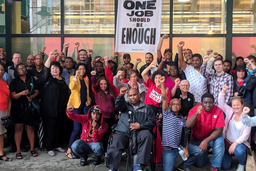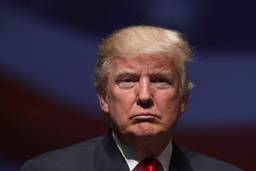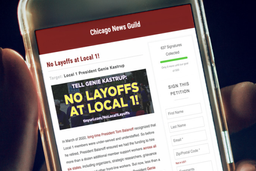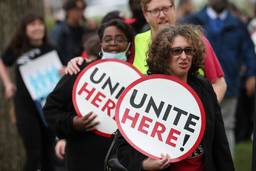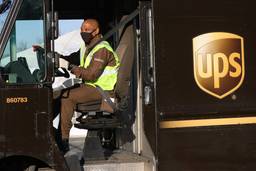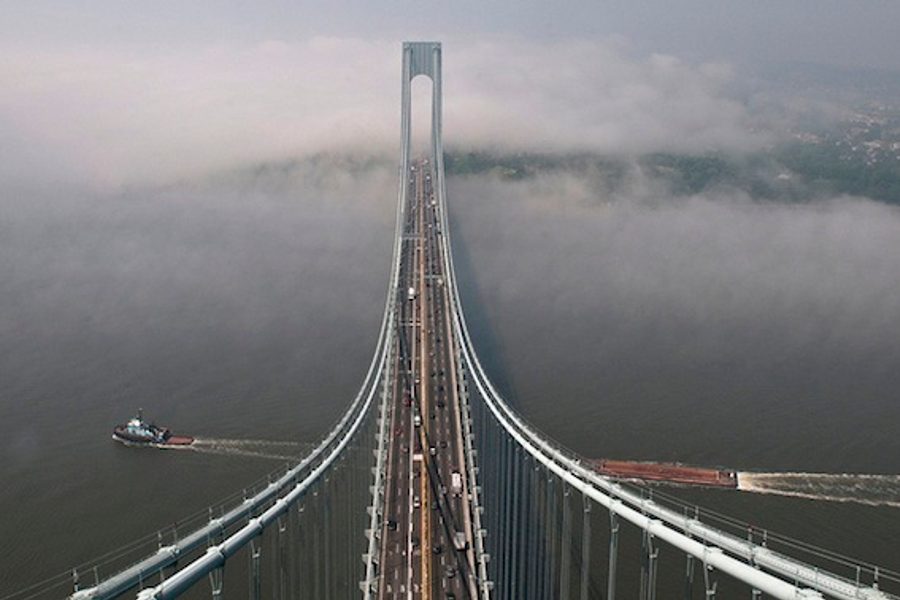
As fireworks shot up to celebrate July 4, New Yorkers were also treated to an explosion of anger from elected officials and labor leaders over a plan to import Chinese steel to repair one of the city’s landmark bridges.
Transportation officials want to use 15,000 tons of imported Chinese steel for renovations to the Verrazano-Narrows Bridge, which connects Staten Island and Brooklyn. Famed as the starting point of the annual New York City Marathon, the bridge is also remembered fondly by moviegoers for its supporting role in the 1977 oldie Saturday Night Fever.
Errol Louis, a popular radio host and newspaper columnist in the city, ignited the conversation with his July 3 column in the New York Daily News. The column blasted New York’s Metropolitan Transportation Authority (MTA) for buying Chinese steel while American steelworkers are hurting from industry-wide contraction. Louis noted that, adding insult to injury, the MTA’s estimated $34 million purchase is being financed by $15 bridge tolls that have long irked many New Yorkers.
Louis’ attack has not gone unanswered. MTA spokesperson Adam Lisberg says the agency had spent “millions” trying to source the steel contract in the U.S., preferably with a unionized company in New York state. But highly specialized requirements for the steel means there are no U.S. mills currently producing the right type, he says, so several attempts were made to induce an American company to initiate production. The attempts were unsuccessful, and the MTA only turned to Chinese sources as a last resort, according to Lisberg. Furthermore, the $34 million in steel work is only part of the total bridge project cost of $235 million, the vast majority of which will be spent using U.S. vendors and employing unionized labor, the MTA spokesman said. (Many of these same points were laid out in a rebuttal to Louis by MTA chief Thomas F. Prendergast, published July 7 in the Daily News.)
First to speak out against the Chinese steel deal was the United Steelworkers (USW), the 850,000-member union with its roots in the steel towns of Pennsylvania and the industrial Midwest. In May, USW President Leo Gerard wrote to MTA leaders urging them to reconsider the plan.
“American steelmakers and steelworkers have the drive, the know-how and more than enough capacity to supply the Verrazano-Narrows Bridge project with the best steel in the word made at the safest and most environmentally-responsible plants in the world. In addition, much less pollution will result from shipping steel for the project from American plants, some of which are located within 100 miles of the bridge, than would be from hauling it halfway around the world from China,” Gerard wrote.
USW Vice President Tom Conway added fuel to the fire when he told the Daily News on July 1 that two Pennsylvania steel mills had bid for the bridge contract, but had lost out to a Chinese government-owned steel company.
President of the International Association of Bridge, Structural, Ornamental and Reinforcing Iron Workers Walter Wise added his voice in late June, saying to the Wall Street Journal:
Rather than abandon the U.S. steel and fabrication market for cheap labor, untested Chinese products, and the insecurity of the supply chain; the commitment to the use of U.S.-produced steel and fabrication to rebuild our 20,000 failed bridges and aging infrastructure will expand and modernize our native capacity….The ‘price’ of Chinese steel may be low, but the value to American families is nonexistent.
And the outrage isn’t limited to labor unions. “Sourcing 15,000 tons of steel from China for the Verrazano-Narrows Bridge is particularly offensive as the vast majority of Chinese steel companies are government-owned and controlled, and heavily subsidized,” stated Thomas J. Gibson, president of the business lobby group American Iron and Steel Institute. “In addition, the Chinese government deliberately engages in unfair trading practices like currency manipulation to give Chinese exports an unfair competitive advantage” over U.S.-based companies.
Rep. Michael Grimm (R-Staten Island/Brooklyn) chimed in, telling Working In These Times:
The MTA is charging $15 dollar tolls to cross the Verrazano Bridge, only to send that money to China. This is completely outrageous! At a time when America’s economy needs a boost, it’s imperative that we reinvest these dollars here in the U.S. I have been in close contact with NYC’s labor groups and stand with them in urging the MTA to reconsider its ridiculous un-American decision.
Serious environmental considerations are also at issue, according to N.Y. State Senator Diane Savino, who represents a Staten Island district where the bridge lands after traversing upper New York harbor from Brooklyn. In a June 17 letter to letter to MTA’s Prendergast, Savino wrote:
Chinese steel producers emit significantly more pollution than their American counterparts. Chinese companies emit more than five times as much CO2 per ton of steel produced, almost three times as much nitrogen oxides, and almost twenty times as much particulate matter than the United States steel industry. Further, the carbon footprint of China’s steel industry is alarming — it now accounts for as much CO2 emission as the rest of the global steel industry combined.
Labor unions across the city and the state are united in demanding that the MTA back down, according to Vincent Alvarez, head of the New York City Central Labor Council.
“At a time when so many are struggling to make ends meet, it is unconscionable that the MTA would bypass skilled U.S. steelworkers and award a multi-million-dollar contract to China,” he wrote in an email to Working In These Times.
“The Verrazano Bridge is an integral part of New York City’s transportation infrastructure, and the men and women of Staten Island and Brooklyn represent the heart of our city’s workforce. The decision to essentially outsource the job to China is a slap in the face to the very residents in the communities served by the Bridge. Shortsighted decisions like this only hurt local residents, and make it that much more difficult to grow the city’s middle class,” Alvarez stated.
Alvarez’ statement notwithstanding, the MTA is a good union employer, remarks spokesperson Lisberg. The MTA intends to employ members of the Ironworkers union on the bridge project, as well as member of the International Union of Painters and Allied Trades, the Laborers International Union, the International Brotherhood of Electrical Workers and the International Union of Operating Engineers, he says. The bridge project will employ 75 to 130 local workers every day for about four years, he estimates, totaling some one million man-hours.
The New York fireworks recall a similar display in California two years ago when it became public that transport officials had purchased Chinese steel for use in reconstruction of the San Francisco-Oakland Bay Bridge. The furor over the Bay Bridge project has not completely died down, and is being further revived now by the labor-management advocacy group Alliance for American Manufacturing. The Alliance set off fireworks of its own last year when it hired a handful of billboards in the Bay Area slamming the use of Chines steel in the bridge project, and suggesting that new “Buy American” policies are needed in public works projects nationwide.

I hope you found this article important. Before you leave, I want to ask you to consider supporting our work with a donation. In These Times needs readers like you to help sustain our mission. We don’t depend on—or want—corporate advertising or deep-pocketed billionaires to fund our journalism. We’re supported by you, the reader, so we can focus on covering the issues that matter most to the progressive movement without fear or compromise.
Our work isn’t hidden behind a paywall because of people like you who support our journalism. We want to keep it that way. If you value the work we do and the movements we cover, please consider donating to In These Times.
